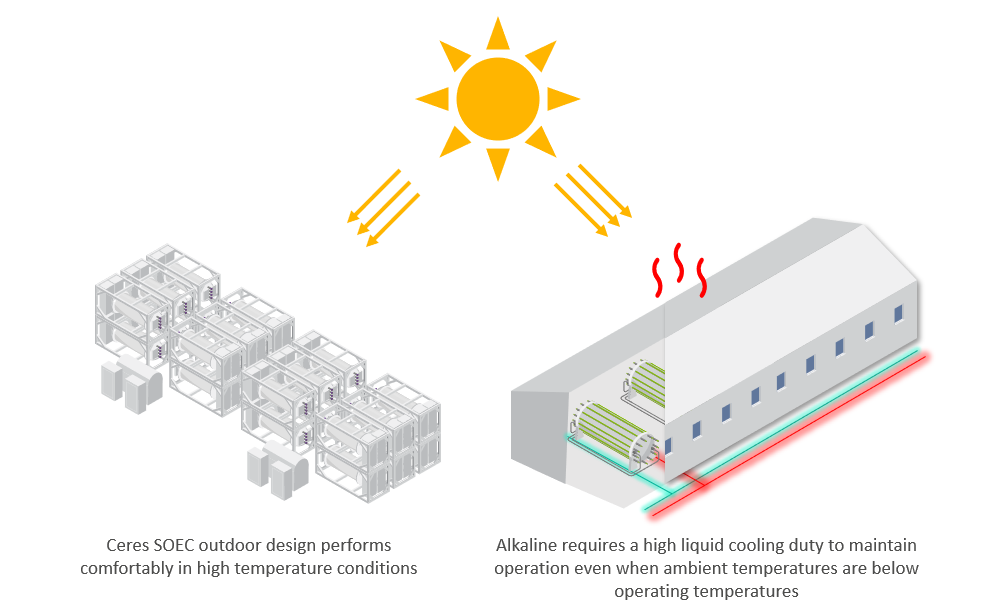Feb 03, 2025
The challenges of a desert climate for electrolysis and how Ceres SOEC overcomes them
Arid regions are a goldmine for renewable energy, boasting some of the planet’s best solar and wind resources. These areas typically receive abundant sunshine throughout the year, with consistently clear skies and low humidity. Their open landscapes feature few obstructions creating consistent and strong wind patterns. These characteristics make arid regions natural hubs for harnessing renewable energy which is reflected by the giga-scale hydrogen projects we see announced in these climate zones.

A key challenge that comes with arid regions is accompanying high temperatures. Alkaline and PEM technologies operate at high voltages and generate heat internally, so must be cooled to remain within their operating limit. Air cooling is an ineffective option when ambient temperatures are high. The higher the ambient temperature the harder the cooling system has to work and the more power hungry it becomes. The problem is made even worse by the solar radiation beating down on the building that houses the electrolysers, creating more heat energy to reject. Evaporative Water cooling is the only option for an efficient solution but is a precious resource in these regions.
Ceres’ solid oxide technology, embedded in Atkins Realis’ plant design, overcomes these problems. As it operates at the 450 to 630 degrees Celsius range and at much lower voltage no internal heat is generated by the stacks that does not benefit the system, therefore requiring no cooling system to operate. This also means that the electrolyser does not need a building and can function effectively in open-air settings.
Arid regions are zones of opportunity for the green hydrogen industry. However, with opportunity comes challenges for incumbent electrolysis technologies. Ceres’ solid oxide technology bypasses these issues simplifying operation and retaining excellent efficiency.



